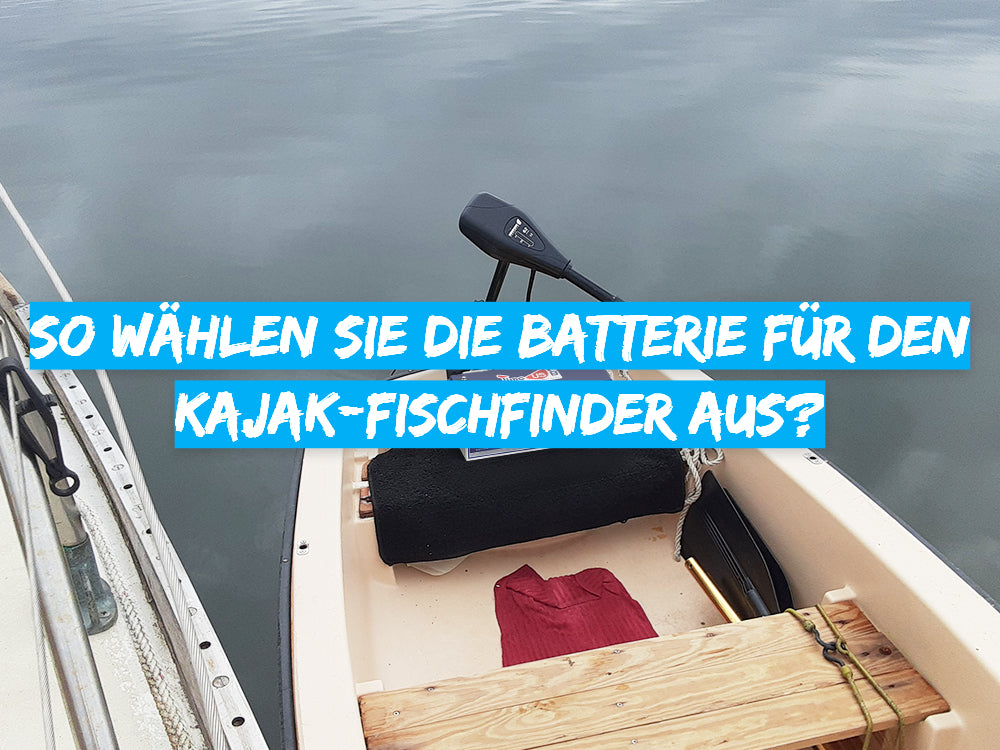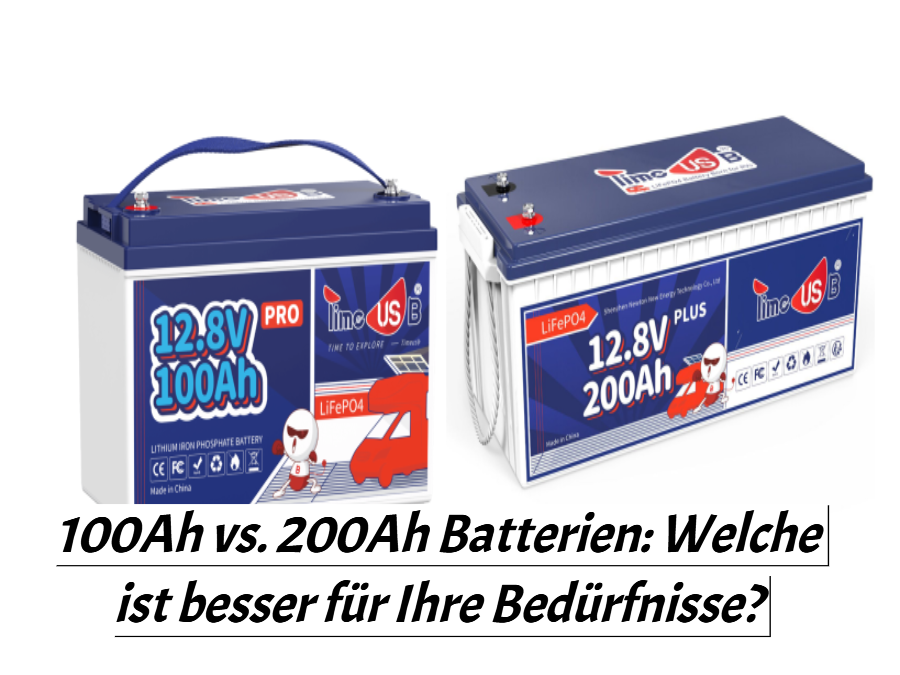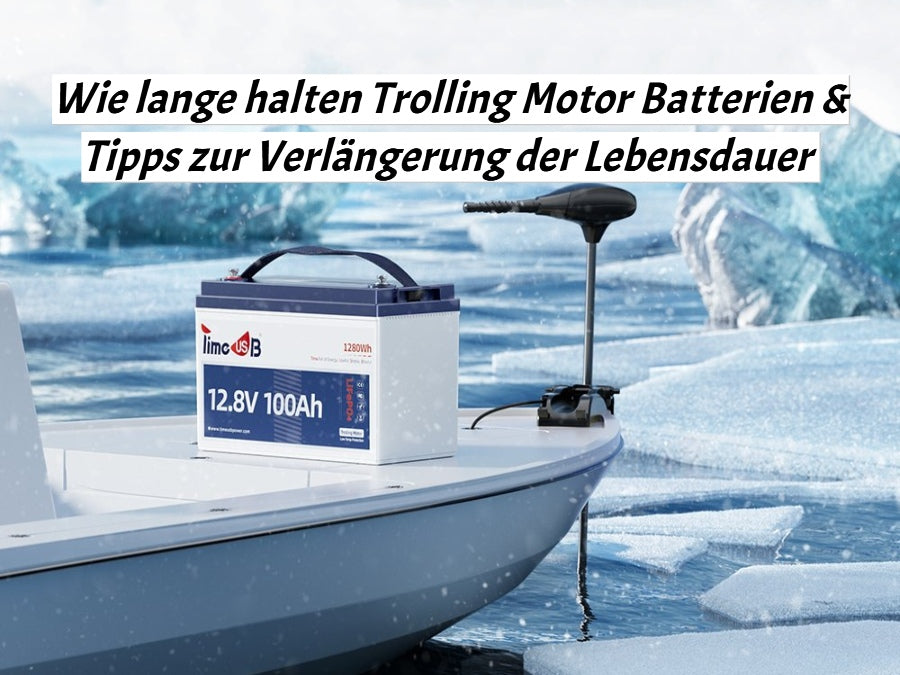How to choose battery for kayak fish finder?

Kayaking and fishing are activities that combine tranquility with the thrill of the catch. A kayak fish finder can be vital in finding the best fishing spots. However, a fish finder is only as good as the battery that powers it.
When choosing the right kayak fish finder battery, there are numerous factors to consider to ensure uninterrupted performance and durability. In this comprehensive guide, we'll cover the essentials to help you choose the best battery for your fish finding needs.
Understanding Kayak Fish Finder Power Requirements
The first step in choosing a battery is to know the power requirements of your fish finder. These electronic devices usually come with a 12V system but current draw may vary. A small, basic fish finder may require a current of only 0.1A, while more advanced models with GPS and color display may use 1A or more. This information can be found in your device's manual and is essential for selecting a battery with the correct capacity.
battery types and technology
Once you've determined your power needs, explore battery types to find out which one best fits your setup.
lead-acid batteries
Traditional lead-acid batteries are widely used due to their affordability and availability. In this category, sealed lead-acid (SLA) batteries, including Absorbent Glass Mat (AGM) batteries, are preferred by kayakers because they are maintenance-free and spill-proof.
AGM batteries represent an advancement and are known for their better charge retention and longer service life compared to conventional SLA batteries.
lithium-ion batteries
lithium-ion-Alternatives are the newer technology on the market. These batteries feature a higher energy density, meaning they can hold more power despite their size and weight.
They provide a constant voltage level throughout the discharge cycle and typically have a much longer lifespan than lead-acid batteries.
battery capacity and running time
The capacity of a fish finder battery is crucial as it determines how long you can use your device on the water. Here's what you need to assess:
Nominal capacity (Ah):Batteries are rated in ampere hours (Ah). This value gives an indication of how many amps a battery can deliver in one hour. For kayak fishing, a battery capacity of 7-20 Ah is usually sufficient, but you should calculate your specific needs based on the power consumption of your fish finder and how long you expect to use it.
Estimated runtime: A simple formula to estimate battery life is to divide the Ah rating of the battery by the current draw of the fish finder. For example, a 10Ah battery powering a device at 1A could theoretically run for 10 hours.
Size and weight restrictions for kayaks
Because kayaks have limited space and buoyancy, the size and weight of your battery is important. Lithium-ion batteries are often preferred because they are much lighter and more compact. If space is at a premium, heavier lead-acid batteries may not be practical.
durability and environmental resistance
Kayaking environments require high levels of equipment.Batteries are exposed to moisture, temperature changes and shocks. Waterproof batteries with a robust construction are preferred. While some batteries are sealed to be waterproof, the use of additional protective battery cases provides an additional layer of protection against damage from water and shock.
Charging and Lifecycle Considerations
When charging, not all batteries are the same:
- Lead-acid batteries typically require a longer charging time and may need to be maintained with trickle chargers when not in use.
- Lithium-ion batteries can be charged faster and require no maintenance between uses.
- Life cycle: Evaluate how many charging cycles the battery can withstand before its capacity decreases. Lithium batteries often allow thousands of cycles, compared to the few hundred cycles typical for lead-acid models. Lithium batteries from Timeusb have a lifespan of more than 4000 years, which corresponds to a lifespan of over 10 years.
Compatibility and Installation
Before purchasing, make sure the dimensions of the battery will fit in the battery compartment provided for your kayak. Also consider cables, chargers, and additional equipment the battery may require. Many batteries are sold with mounting kits or have proprietary systems for securing them in kayaks; compatibility with your existing setup is key.
Safety first
Safety cannot be stressed enough. Batteries carry inherent risks such as fire or chemical hazards, especially if damaged or used improperly. Opt for batteries with built-in safety features such as circuit protection and thermal shutdowns. Always follow the manufacturer's guidelines for charging and storage.
budget and long-term costs
In addition to evaluating the upfront cost, evaluate the value over the life of the battery. While lead-acid batteries may be cheaper initially, you may end up having to replace them more often than a lithium-ion battery, which may have a higher upfront cost but could offer greater value in the long run due to its durability and longer lifespan.
Why Lithium Batteries Are the Better Choice for Fish Finders
Below is a table that shows why a lithium battery is the better choice.
| feature | Advantages of lithium batteries | Disadvantages of lead-acid batteries |
| Weight | Significantly lighter, which makes transport easier and puts less strain on the kayak. | Heavier, which can be cumbersome in a kayak and can affect buoyancy and maneuverability. |
| Size | The compact size offers more flexibility when placing it on a kayak. | Generally larger and bulkier, requires more space, which is at a premium in a kayak. |
| capacity | Higher energy density, which means they can store more energy and allow fish finders to last longer. | Lower energy density requires larger batteries for the same capacity, which leads to weight and space problems. |
| charging efficiency | Fast charging capability and more efficient power delivery, meaning less downtime and more time on the water. | Longer loading times and less efficient power consumption, which can lead to longer wait times between applications. |
| life | Longer life with thousands of charge cycles, reducing the need for regular battery replacement. | Fewer charging cycles may lead to more frequent replacements over time. |
| maintenance | Virtually maintenance free, with no need for constant monitoring or trickle charging to maintain battery health. | To ensure a long lifespan, regular maintenance is required, which can be inconvenient for kayak anglers. |
| voltage stability | Maintain consistent voltage levels throughout the discharge cycle to ensure fish finders continue to function optimally until the battery is almost empty. | When the battery is discharged, significant voltage drops can occur, which can affect the performance of the fish finder. |
| environmental pollution | Due to their longer lifespan and the absence of hazardous substances such as lead and acid, they generally have a lower impact on the environment. | Contains lead, acid and other chemicals that may be harmful if improperly disposed of. |
| acquisition costs | More expensive initially, but more cost-effective over time due to durability and longevity. | The upfront cost is cheaper, but may be more expensive in the long run due to replacement and maintenance costs. |
| safety devices | Often equipped with advanced safety features to protect against overcharging, overheating and short circuits. | Advanced safety features may be missing, which can increase the risk of accidents, especially in challenging kayaking environments. |
| temperature resistance | Better performance over a wide temperature range. | In extreme temperatures, which can be typical in some kayaking situations, performance may deteriorate. |
| discharge rate | Lower self-discharge rate, so the charge is retained longer when not in use. | A higher self-discharge rate requires more frequent charging, even when the battery is not in use, to maintain battery health. |
Best Fish Finder Battery for Your Boat or Kayak
Choosing the perfect battery for your fish finder is crucial for smooth operation on the water. Key features to consider include the battery's compactness, its resistance to water ingress, its ruggedness, and its portability.
It is important to accurately measure the ampere hour (Ah) of the battery.This ensures compatibility with the power requirements of your fish finder and guarantees a stable and sufficient power reserve to maintain operation throughout your fishing trip.
For a robust and reliable marine-grade power source, we recommend using the Timeusb 12V 50Ah or 100Ah Fishfinder batteries. These units offer a harmonious blend of efficiency, capacity and reliability and are specifically designed for the marine environment of boats and kayaks.

FAQs about the fish finder battery
1. How long can a fish finder operate on a 12 volt battery?
When using a fish finder with a typical power draw of around 2A, you can expect a fully charged 12V 100Ah (ampere hour) battery to power the unit for around 50 hours. In contrast, the power requirements for trolling motors are higher, often drawing 1A per pound of thrust at full power. For example, if you're running a 50-pound thrust motor at maximum capacity, the battery can be completely drained within two hours. To ensure long battery life, it's important to avoid deep discharges - it's best to keep the battery above 50% to 80% of its full capacity - and to recharge it soon after use.
2. Does a fish finder need its own battery?
A separate, dedicated battery for a fish finder is not mandatory. Often a fish finder can efficiently share a boat's main battery with other electronic devices such as navigation devices, radios or lighting systems.
However, using an exclusive battery for your fish finder can have certain advantages. Firstly, it guarantees a stable and uninterrupted power supply, which is crucial when other onboard electronics draw a lot of power from the main battery. In addition, a dedicated battery optimizes power management and electrical design and may simplify installation and maintenance procedures.
3. Can you operate a fish finder with a deep cycle battery?
You can actually power a fish finder with a deep cycle battery. These batteries are designed to provide reliable and long-lasting power output, which favors the continuous operation of devices such as fish finders, trolling motors, and additional marine electronics. Due to their resilience and ability to sustained discharge, deep cycle batteries are suitable for the needs of fish finders and similar applications.
Conclusion
The ideal kayak fish finder battery strikes a balance between capacity, size, weight, durability, rechargeability, compatibility, safety, and cost. By thoroughly evaluating each factor in relation to your specific needs, you can enhance your fishing trips with uninterrupted access to your fish finder's insights.
Whether you choose the economy and availability of lead-acid batteries or the efficiency and performance of lithium-ion options, making the right choice will allow you to worry less about power and focus more on enjoying kayak fishing. Remember, your fishing success depends on the reliability of your tools.So invest wisely in your choice of batteries to get a fruitful return on your fishing productivity.




